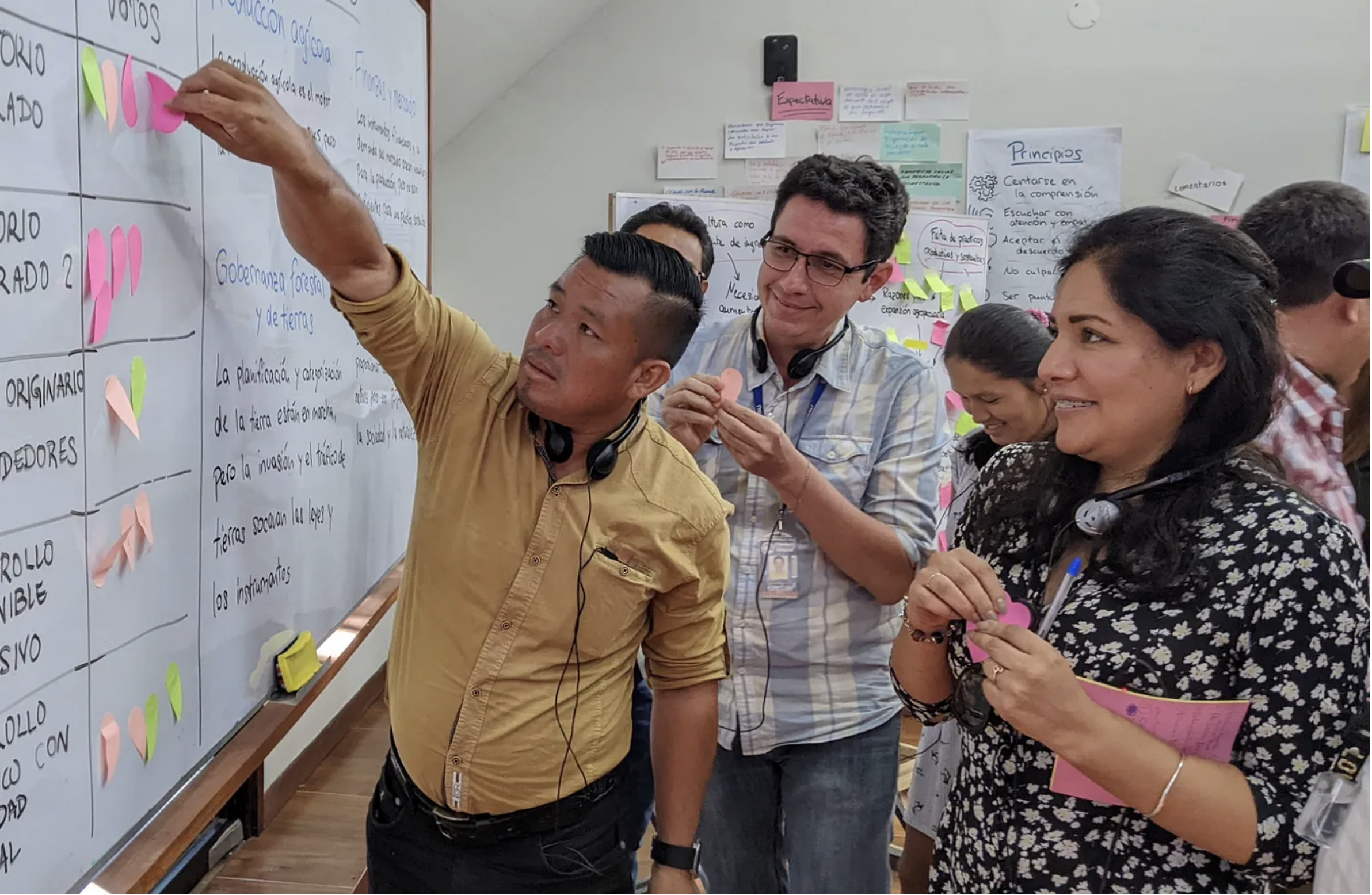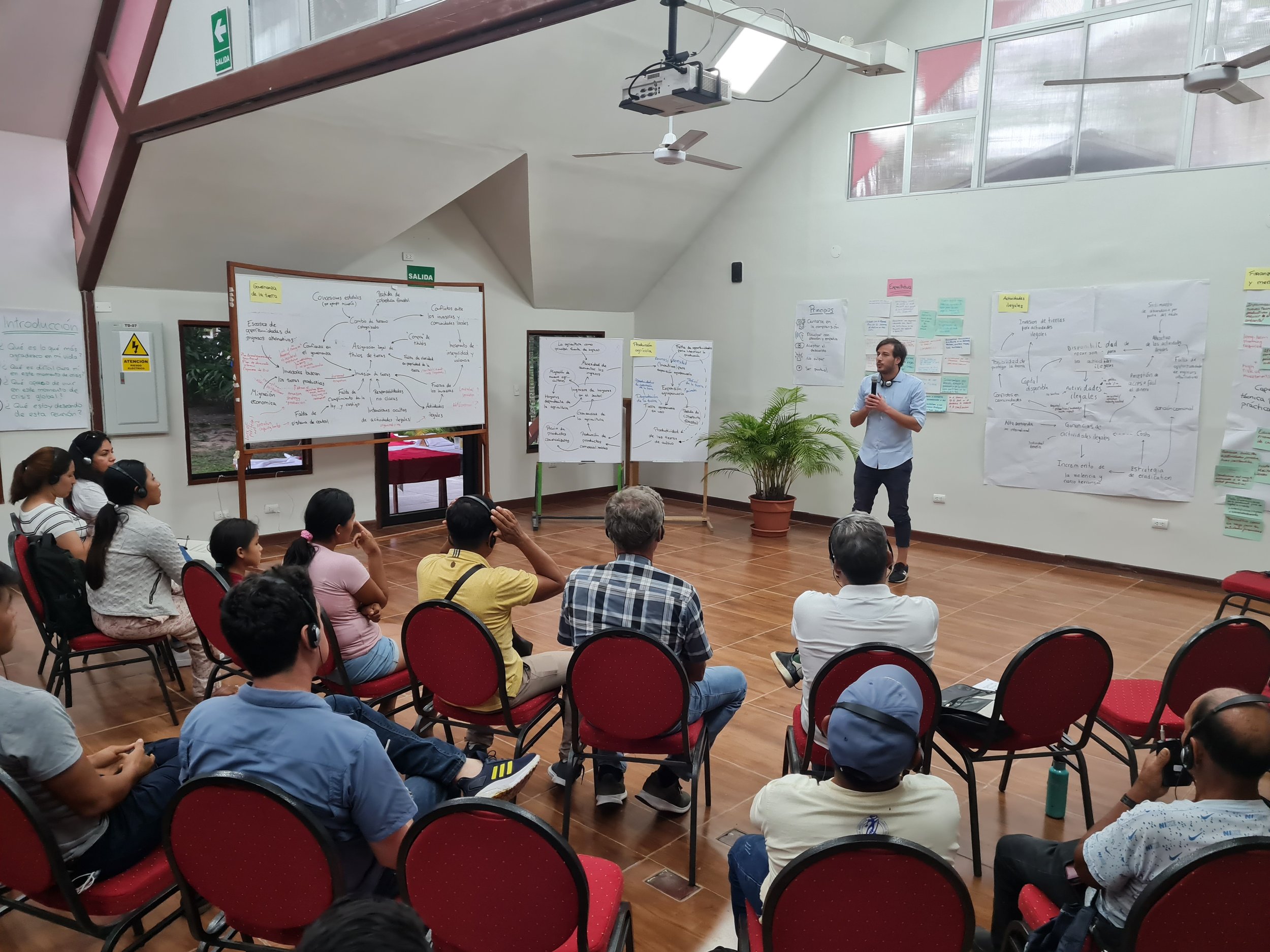
Our Work
Our System Mapping projects
from various sectors.
Case Study
How can we improve openness and cooperation within the German innovation system?
CLIENT: Stiferverband Germany
We used System Mapping to visualize the relationships and dynamics between academia, government, and private organizations when it comes to the open exchange of knowledge and cooperative partnerships. We organized a participatory engaging more than 50 stakeholders to develop a participatory System Map which includes the expertise of various sectors. As a result, we identified various leverage points which provided the foundation for future strategy and policy development.







Case Study
What is driving current deforestation in the Peruvian amazon?
CLIENT: United Nations Development Program (UNDP)
UNDP Peru is one of the local agents trying to reverse the trend. They are actively cooperating with the stakeholders from government, private sector and civil society and are aiming to show a way how sustainability and economic productivity can — and have to — work together. To support UNDP Peru in navigating the complexity, we teamed up with our friends from Sensemakers Collective to lead a participatory System Mapping project. Together with UNDP and local stakeholders we asked ourselves: What is driving current deforestation? And how can we build a sustainable, productive landscape?






Case Study
What are the existing dynamics, causes and effects that drive land-use in Chaco, Paraguay?
CLIENT: United Nations Development Program (UNDP)
Since 1985, the Chaco region in Paraguay experiences widespread and drastic declines in ecosystem functions and services. Our systems approach guided regional change-makers to identify critical causes and effects in land-use drivers, understand how they influence the different parts of the system and to agree on a shared view on the existing dynamics in the region. With the results of the various workshops, change-makers were able to validate current interventions and to identify new opportunities working collaboratively towards a more sustainable future.
Case Study
What are the relationships of the stakeholders in the education system in Germany?
CLIENT: Schule im Aufbruch (School initiative in Germany)
“Schule im Aufbruch” catalyzes transformative processes within schools in Germany through their programs and network-driven approaches. They provide essential support to educators on the ground and facilitate cross-sector exchange. Our role involved collaborative efforts to assist “Schule im Aufbruch” in mapping the entire landscape of stakeholder relationships within the system. We engaged both internal and external experts to accomplish this task. Given the variations in Germany's federal education system across counties, this mapping initiative serves as an initial stepping stone. It will now be disseminated throughout the network and customized to suit diverse contexts.
Case Study
What are the interconnections between the energy-supplier landscape in Bavaria, Germany?
CLIENT: “Synergie” Project
The “Synergie” project has the aim to synchronize the industrial energy demand with the increasingly fluctuating energy supply.
To get a better overview of the complex energy landscape (on Bavaria, Germany) they initiated a stakeholder process where over 50 actors from science, business, civil society, and politics were involved to create a System Map. Thanks to the interdisciplinary approach, a common understanding could be continuously developed and "blind spots" uncovered. This not only created an ever-growing picture but also new questions for the content focus of the coming years.
We supported Synergy in rearranging, evaluating, and designing the System Map in the software Kumu.
Case Study
How can we foster adequate urban housing in Kenya?
CLIENT: Habitat for Humanity
Despite large efforts by government and organizations, the housing deficit in Kenya has reached two million units and is continuously growing. To better understand the dynamics of the housing system, we designed and led a System Mapping workshop with key stakeholders. The developed System Map integrates different sectors of the housing system and represents the shared understanding of participants. The map as well as the process led to new systemic insights, provided an artefact for improved interdisciplinary communication and identified interventions with potential for system-wide effects. The results will inform the formulation and communication of a national strategy by Habitat for Humanity.






